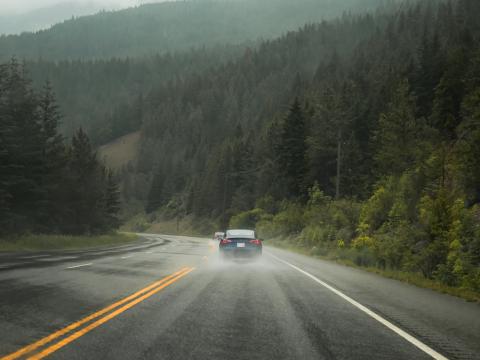Can Tesla teach us how to end violence against children?

We have a lot to learn from industry disruptors and ambitious dreamers, reflects Elena.
By Elena Gaia
Producing and using electric cars at scale was unthinkable ten years ago. There were certainly plenty of people expressing doubt. Now we consider it inevitable and even immensely profitable.
There is a parallel with the plight of ending violence against children – a pandemic that affects more than 1 billion children every year, made worse by the aftershocks of COVID-19. Today, too many of us still doubt whether violence against children can be eradicated, or at least halved, by the deadline of the Sustainable Development Goals in 2030.
The best in their class, Tesla may have a thing or two to teach social innovators seeking to end violence. As outlined in an article in the Harvard Business Review last year, there are a number of success factors in Tesla’s approach – and we can learn a lot from them in our work to end violence against children:
- Winning innovation capital
Getting attention and winning the support of key stakeholders is on the surface the bread and butter of all activists to end violence. Yet, are we actually able, like Tesla and its founder, to materialise in a physical form what a world free from violence means, and convince sceptics? Are we broadcasting our message widely enough and getting third parties talking about and against the violent treatment of children in society? Are we using powerful comparisons that will connect our cause to those that may be more familiar to our audience? - Betting big on core products
Four electric car models have underpinned Tesla’s growth and changed the way humans drive forever. To end violence against children, there are seven proven strategies, each with a sub-set of interventions. In addition, every key actor in this space owns its own projects, not necessarily evidence-based. Too many products mean no one alone is good enough to stand on its legs, diminishing the credibility of the whole package. And even if a country is willing to adopt multiple strategies to end violence at the same time, where should they start? There is a real urgency for advocates to end violence to come together behind a shorter and more feasible set of actions. - Introducing new software
Tesla put batteries in the car trunk rather than at the bottom. What if we put children at the forefront of interventions to end violence, disrupting the pattern of adults always knowing better? What if we identified the elements that are common across multiple forms of violence and contexts and prototyped solutions for those? Could this approach help address at least 50% of the core problems, with the rest being tackled with localised solutions?

- Controlling the systemic bottlenecks
We know one of our biggest and most consistent bottlenecks: measuring in real time whether violence happens. Doing this is complex and expensive, because it is about real children, and privacy and sensitivity concerns are paramount. In addition, it is not clear enough to everyone involved just how much it will take for the world to see the end of violence against children, and what the exact steps should be. These are the hard parts of our campaign and we should tackle them head-on. Tesla went straight to the most challenging point: batteries. Now it produces them at scale, improving performance continuously. - Transforming the industry as a whole
A disruptive product usually begets a whole new infrastructure around it. While Tesla chose to build its own network for charging car batteries around the world, collaborating with partners catering to different areas of an ecosystem can work just as well. The global movement to end violence has increasingly adopted a strategic partnering approach where each organisation comes together to create something bigger than the sum of the parts. The Global Partnership to End Violence against Children is a promising example. What we have not achieved yet is the seamless network that can allow a child to be protected or know where to find support wherever she may be, including during a natural disaster or a conflict. To use Tesla’s jargon, there may be three charging stations in one city, and no station in the next ten; where charging stations exist, cables may be missing; plugs may be different across stations and cars; and so on. We need a way to hold ourselves accountable for actually transforming the whole ecosystem, not just delivering our little great piece of it.
Sending people to the moon, driving electric cars, generating 100% of our energy consumption from renewable sources: I love these big ideas that push the boundaries of what we believe is possible.
Elena Gaia is World Vision's Director of Global Campaigns leading World Vision's It takes a world to end violence against children campaign. Follow Elena on Twitter @elegaia